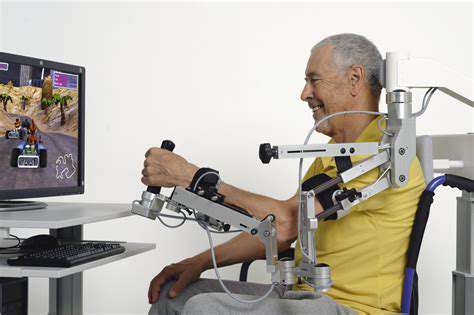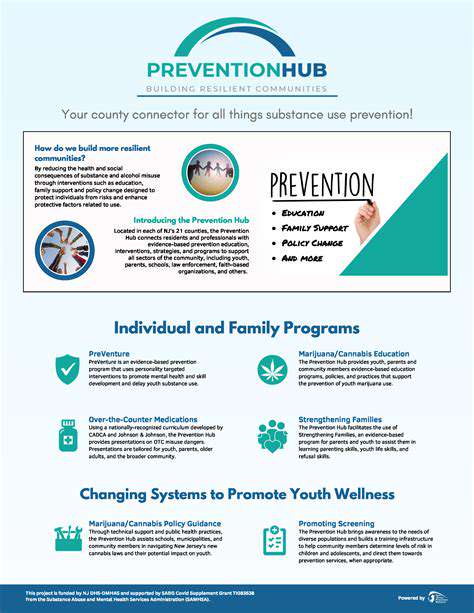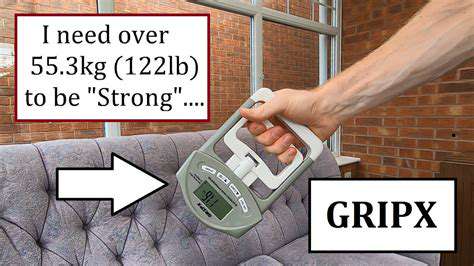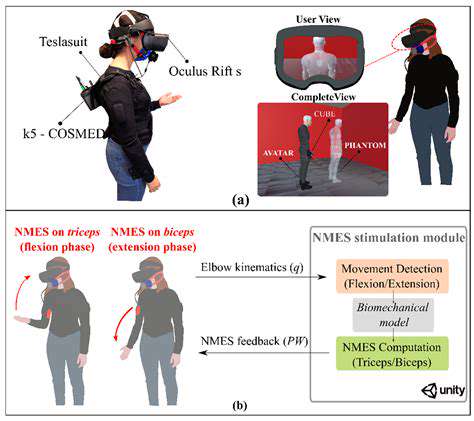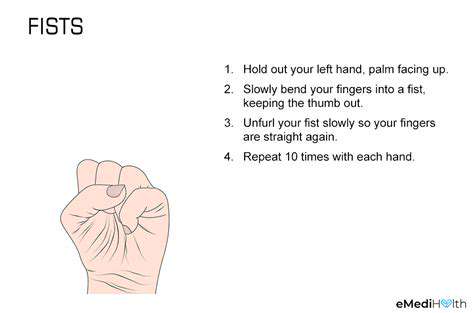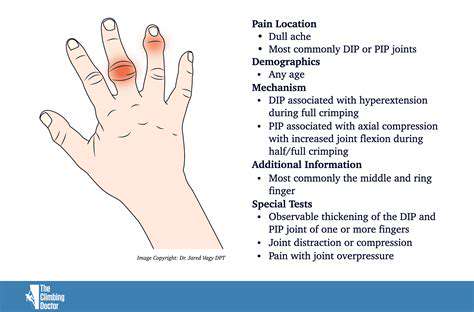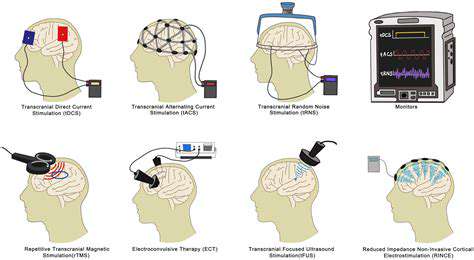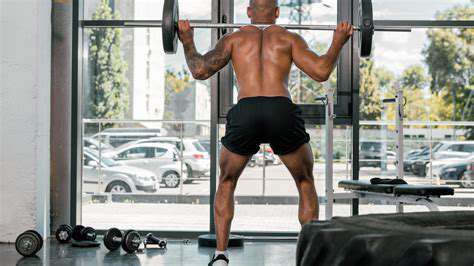Exercises to Boost Wrist Flexibility
Radial and Ulnar Deviation Exercises
Radial Deviation Exercises
Radial deviation exercises focus on moving your wrist towards your thumb side. This movement is crucial for maintaining proper wrist function and preventing imbalances. Performing these exercises regularly can help improve your range of motion and reduce stiffness, contributing to overall wrist health. Incorporating radial deviation exercises into your routine can be a valuable step in enhancing your wrist's ability to perform daily tasks with ease and comfort.
One effective exercise involves using resistance bands. Wrap a resistance band around your hand, keeping your forearm stable. Slowly and gently pull your hand towards your thumb side, holding for a few seconds. Repeat this motion several times for a few sets, ensuring you maintain proper form throughout the exercise.
Ulnar Deviation Exercises
Ulnar deviation exercises, on the other hand, involve moving your wrist towards your pinky finger side. Just as with radial deviation, consistent practice of these exercises is essential for maintaining a healthy range of motion and preventing wrist problems. Ulnar deviation exercises are important for preventing imbalances and ensuring a full range of motion in your wrist.
A simple exercise for ulnar deviation involves using light weights. Hold a light weight in your hand, keeping your forearm stable. Slowly and gently pull your hand towards your pinky finger side, holding for a few seconds. Repeat this movement several times for multiple sets, always focusing on maintaining a controlled and consistent form.
Wrist Flexion Exercises
Wrist flexion exercises concentrate on bending your wrist downwards towards your forearm. These exercises are beneficial for improving wrist flexibility and strength, which is vital for tasks involving gripping and lifting. Regular practice can help prevent wrist injuries and stiffness associated with repetitive motions.
Wrist Extension Exercises
Wrist extension exercises focus on straightening your wrist upwards away from your forearm. These exercises are essential for maintaining the balance needed for a healthy wrist and preventing imbalances. Incorporating wrist extension exercises into your routine can contribute to a more flexible and functional wrist, improving your ability to perform daily tasks.
A good wrist extension exercise involves using a resistance band. Wrap the band around your hand and gently push your hand upwards, holding for a couple of seconds. Repeat this movement a number of times for multiple sets, ensuring proper form throughout the exercise.
Wrist Circles
Performing wrist circles is a fantastic way to improve overall wrist mobility and flexibility. These exercises promote a full range of motion, improving the flexibility and strength of the wrist joints and surrounding muscles. Incorporating wrist circles into your routine can contribute to preventing wrist stiffness and injuries.
To perform wrist circles, simply rotate your wrist in circular motions, both clockwise and counter-clockwise. Start with small circles and gradually increase the size as you gain more flexibility. Maintain a controlled and smooth movement throughout the exercise.
Strengthening Exercises for Wrist Stability
Wrist stability exercises are essential for preventing injuries and improving performance in activities requiring wrist strength. These exercises target the muscles surrounding the wrist, enhancing its ability to support and stabilize the joint during various movements. Stronger wrist muscles can also lead to better control and accuracy during activities involving precise hand movements.
One effective exercise is to hold light weights or resistance bands and perform wrist flexion and extension movements. This helps to strengthen the muscles responsible for wrist stability and control. Focus on maintaining a steady and controlled movement to maximize the effectiveness of the exercise.
Advanced Wrist Strengthening Exercises

Wrist Extensor Strengthening
Strengthening the wrist extensor muscles is crucial for activities like gripping and lifting objects. These muscles are often overlooked in workout routines, leading to potential imbalances and injuries. Proper wrist extension exercises help prevent carpal tunnel syndrome and other wrist ailments. These exercises also improve overall hand and wrist function, enhancing daily tasks and athletic performance.
A key exercise for wrist extensors is the wrist extension with a resistance band. This allows for progressive resistance, gradually challenging the muscles as they get stronger. Holding the band, with your wrist extended, and slowly lowering your hand, increases the resistance and builds strength. Consistent practice of this exercise will lead to noticeable improvements in wrist strength and stability.
Wrist Flexor Strengthening
The wrist flexor muscles are equally important for many everyday tasks. They are responsible for bending the wrist and play a vital role in activities like typing, writing, and gripping. Neglecting these muscles can result in a weakened grip and wrist pain. Strengthening them is essential for preventing injuries and maintaining overall hand health.
A simple yet effective exercise for wrist flexors is using light weights or resistance bands. Holding the weight or band, with your palms facing down, flex your wrist towards your forearm. This consistent action targets the wrist flexors, gradually building strength and endurance, making everyday tasks easier and reducing the risk of injuries.
Neutral Wrist Strengthening
Neutral wrist position exercises are vital for maintaining wrist health. These exercises target the muscles that stabilize the wrist in a neutral position, crucial for preventing injuries and maintaining optimal wrist function. Exercises in this category promote balanced strength development, preventing muscle imbalances that may lead to pain and discomfort. A neutral wrist position is essential for performing many daily tasks without strain.
A common exercise for neutral wrist strengthening is using a dumbbell or light weight. Hold the weight with your palms facing each other, maintaining a neutral wrist position. Slowly flex and extend your wrist, keeping your forearm stable. This motion strengthens the muscles supporting the neutral wrist position, improving stability and overall wrist health.
Radial Deviation Exercises
Radial deviation exercises focus on the muscles that move the wrist towards the thumb side of the body. These muscles are important for tasks like turning a key or using a screwdriver. Strengthening these muscles improves dexterity and control in your hand and wrist movements. Regular practice of these exercises can help improve the range of motion and prevent injuries.
One exercise for radial deviation involves using a resistance band. Wrap the band around your hand with your palm facing down. Slowly move your wrist towards your thumb side, feeling the stretch in the muscles. Repeating this movement with proper form gradually builds strength in the radial deviation muscles, enhancing dexterity and wrist function.
Ulnar Deviation Exercises
Ulnar deviation exercises target the muscles that move the wrist towards the little finger side of the body. These muscles are important for tasks like gripping tools or writing. Developing these muscles is essential for maintaining a balanced wrist strength and preventing potential injuries. Improving ulnar deviation can contribute to overall hand health and comfort.
Using a resistance band, wrap it around your hand with your palm facing up. Slowly move your wrist towards your little finger side, feeling the stretch in the muscles. This exercise strengthens the ulnar deviation muscles, improving control and flexibility in your wrist movements. Consistent practice will lead to a significant improvement in wrist function.
Wrist Strengthening with Light Weights
Using light weights for wrist exercises is a highly effective way to build strength and endurance. Weights provide progressive resistance that challenges the muscles, stimulating growth and increasing strength over time. This method effectively targets the muscles without causing undue strain or stress on your wrist joints. Using light weights is particularly suitable for those starting their wrist strengthening journey.
Holding light dumbbells or weights, perform wrist flexion, extension, and neutral position exercises. Gradually increase the weight as your strength improves, ensuring proper form throughout the exercise. This ensures that the exercises are effective and prevents potential injuries.
